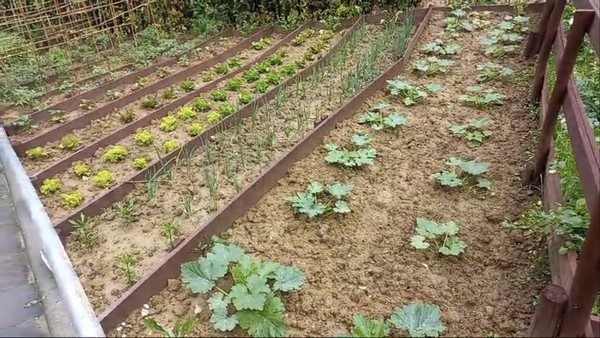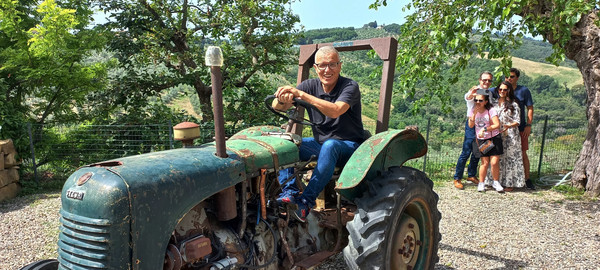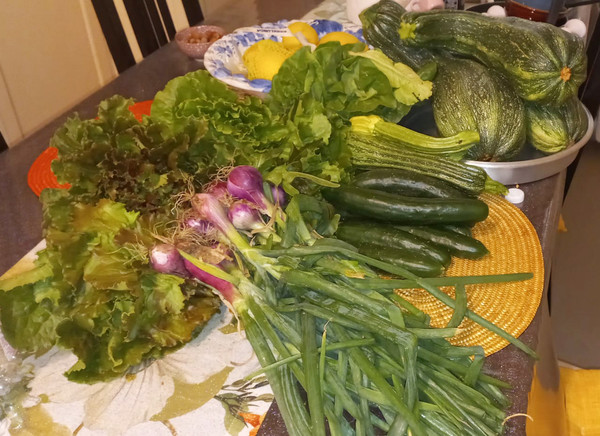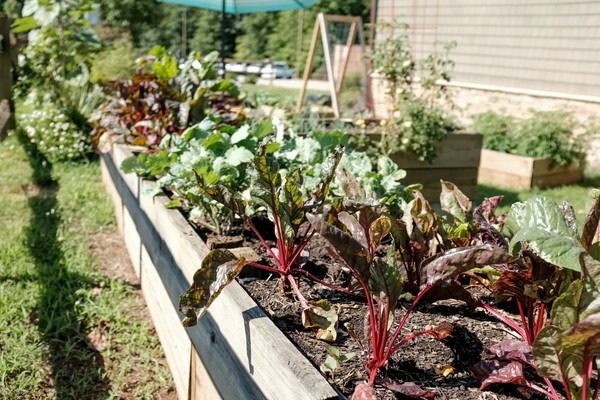
[아츠앤컬쳐] 텃밭은 무엇보다 생존과 건강에 유용하며, 또한 행복과 아름다움의 원천이다. (루카 메르칼리, Prepariamoci, 2011)
텃밭을 가꾼다는 것은 매일 우리가 직접 재배한 재료로 식사를 준비하고 음식을 섭취하며 영양학적으로 이익을 얻고 누리는 데 있어 정성을 다하는 일이다. 텃밭은 농약과 화학성분이 없이 신선하고 안전한 유기농 작물을 재배하고 수확할 수 있게 해준다. 채소와 과일이 잘 정돈된 농장은 자연의 아름답고 다양한 색을 보여주며, 우리의 눈과 영혼에 평화를 가져온다.
이탈리아에서 텃밭은 많은 사람들의 일상생활, 문화, 지속적인 실행에 매우 중요한 의미를 차지하고 있다. 도시든 시골이든 텃밭 가꾸기는 유기농 및 지역 식품 생산에 대한 전통적, 현대적인 트렌드에 뿌리를 둔 사랑받는 활동이다. 특히 시골에서는 많은 가정이 라이프스타일의 일환으로 신선한 채소, 과일, 그리고 이탈리아 요리에 필수적인 허브를 생산하는 작은 텃밭을 가꾼다.
이처럼 많은 사람들에게 있어 텃밭 가꾸기 지식을 대대로 전수하는 것이 문화적 정체성을 연속적으로 증진시키는 관행이 되었다. 이는 양질의 식품, 자연, 그리고 성실한 노동의 중요성에 관한 지식을 공유하는 동시에, 시간을 함께 향유하는 방법이기도 하다.

자코모 살리아지 씨는 15세 때 이웃으로부터 텃밭 가꾸는 법을 배웠다고 하는데, 그가 취미인 텃밭 가꾸기를 통해 열정을 유지하며 동시에 활동적이고 여유로운 생활을 즐기고 있다는 이야기를 해 주었다. 시골에서는 사람들이 이웃이나 친구들과 함께 팁, 씨앗, 그리고 수확물을 나누며 친목생활을 하고 유대감을 강화하는 공동체 정원을 관리한다. 로마, 밀라노, 피렌체와 같은 대도시에서도 이러한 공동체 텃밭이 점점 더 인기를 끌고 있다. 주민들은 발코니, 테라스, 옥상뿐만 아니라 작은 공유 공간을 통해 자신의 농작물을 재배할 수 있다.
텃밭에서 흔히 재배되는 작물 중 소스와 샐러드를 만드는 토마토와, 필수 허브 중 하나인 바질은, 페스토, 카프레제 샐러드, 파스타와 같은 요리에 핵심 재료이다. 또한 서양호박과 그 꽃도 파스타부터 프리타타(오믈렛)에 이르기까지 다양하게 사용되어 널리 재배되고 있다. 가지, 피망, 그리고 샐러드용 채소나 로즈마리, 오레가노, 백리향과 같은 허브도 많이 재배되고 있다.

이탈리아의 농원 경영자들은 종종 자신을 위해 과일과 채소를 재배하지만, 장사를 목적으로 운영하는 큰 텃밭도 있다. 장사 목적의 텃밭 규모는 생산 규모, 시장 수요, 그리고 사업 모델에 따라 달라진다. 많은 사람들이 자신의 텃밭에서 수확한 농작물인 신선한 제철 채소, 과일, 허브 등을 지역 농산물 시장에서 직접 판매하고 있다.
이탈리아 문화에서 텃밭의 개념은 환경과 조화를 이루며 천연자원을 존중하는 철학에 기반한다. 사계절 파종과 수확, 다음 사이클을 준비하며 세심하게 계획된 가꾸기 일정을 결정하며, 기후에 따라 원예 활동을 조정하고, 계절마다 고유의 작업과 작물을 다루는 도전 과제가 발생한다.

Cultivating an Orto: An Appreciation Of The Rhythm Of Nature
L’orto è soprattutto utile alla vostra sussistenza, alla vostra salute, ma pure fonte di gioia e di bellezza. (Above all, the vegetable garden is valuable for your survival and health and a source of happiness and beauty). Luca Mercalli, Prepariamoci, 2011.
The practice of taking care of an orto (vegetable garden) promotes a mindful approach to obtaining daily nourishment and finding joy in preparing a meal composed of ingredients we have cultivated ourselves, consuming the food slowly and enjoying the nutritional benefits. An orto allows us to nurture and harvest fresh, safer, organic produce free from pesticides and chemicals. The well-organized plantations of vegetables and fruits show the beautiful variety of colours in nature, bringing peace to our eyes and souls.
In Italy, an orto holds significant importance in many Italians' daily lives, culture, and sustainability practices. Whether in urban or rural areas, cultivating an orto is a beloved activity, rooted in both traditional and modern trends toward organic and local food production. In rural areas, especially, many Italian families maintain small vegetable gardens as part of their lifestyle which produce fresh vegetables, fruits, and essential herbs for classic Italian cooking.

Many people pass down gardening knowledge through generations, making it a practice that promotes a sense of continuity and cultural identity. It’s a way to share knowledge about the importance of good quality food, nature, and hard work, while also spending time together. Having a conversation with Mr Giacomo Saliasi, who learned how to cultivate an orto when he was 15 years old from his neighbour. His passion and hobby for gardening keep him active and relaxed at the same time and satisfy him, and his loved ones with the produce from his own orto, where he puts his effort, love and attention.
In rural areas, families maintain orti urbani (community gardens) where neighbours and friends promote social interaction and strengthen bonds by sharing tips, seeds, and produce. In big cities such as Rome, Milan, and Florence, community vegetable gardens are becoming more popular. These shared spaces allow residents to grow their produce in small plots of land as well as on balconies, terraces, or rooftops.

Common vegetables and herbs in an orto include pomodori (tomatoes), one of the most commonly grown plants in Italian gardens, which are used in making sauces, and salads. Basilico (basil), one of the essential herbs in Italian cooking, is often grown alongside tomatoes and is key for dishes like pesto, caprese salad, and pasta with pomarola (tomato sauce). Zucchini and its flowers are widely grown and used in a variety of dishes, from pasta to frittata (omelette). Melanzane (eggplants), peperoni (peppers), and insalata (salads) are also common crops. Some herbs like rosemary, oregano, and thyme, are also grown in many orti (vegetable gardens).
Italian gardeners often grow fruits and vegetables for personal consumption, but there are also larger orti dedicated to commercial purposes. The size of orti for business purposes can vary depending on the scale of production, market demands, and the type of business model. Many people sell the produce from their orto at local farmers’ markets, where fresh, seasonal vegetables, fruits, and herbs are sold directly to the public.
Italian culture's concept of an orto is based on the philosophy of living in harmony with the environment and respecting natural resources. The four seasons determine a carefully planned gardening schedule, from planting to harvesting and preparing the orto for the next cycle. Adapting the gardening activities based on the climate, and each season brings its own set of tasks, crops, and challenges.

글 ㅣ Maureen Siwy
Culinary and social traditions researcher

